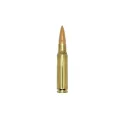Head to Head Comparison


0 Reviews
0 Reviews

0 Reviews
0 Reviews


0 Reviews
0 Reviews

0 Reviews
0 Reviews
MSRP:
$24.92Used Price:
$24.92New Price:
$27.69MSRP:
$0.00Used Price:
$0.00New Price:
$0.00Height
2.02
0.00
Average FPS
2683
Average Grain
163
Average Energy
2617
Recoil
1.95
0.00
Ballistic Coefficient
409.93


.243 Winchester vs .308 Winchester (7.62mm NATO)


.260 Remington vs .308 Winchester (7.62mm NATO)


.270 Winchester vs .308 Winchester (7.62mm NATO)


.280 Remington vs .308 Winchester (7.62mm NATO)


.284 Winchester vs .308 Winchester (7.62mm NATO)


.30-06 Springfield vs .308 Winchester (7.62mm NATO)


.300 Remington Ultra Magnum vs .308 Winchester (7.62mm NATO)


.300 Savage vs .308 Winchester (7.62mm NATO)


.300 Winchester Magnum vs .308 Winchester (7.62mm NATO)